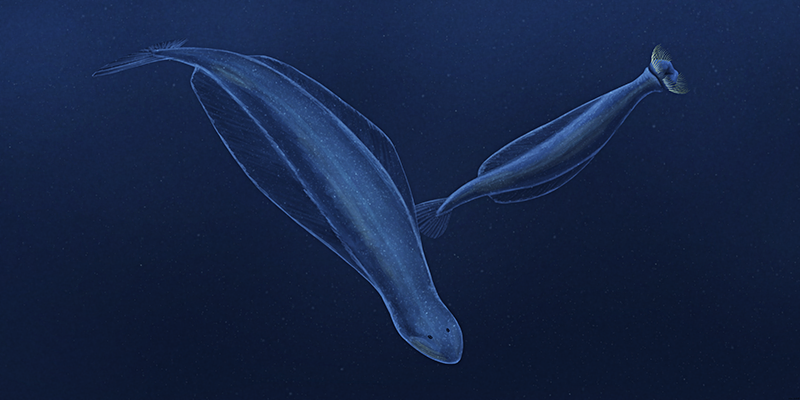Capinatator praetermissus, an arrow worm from the Mid-Cambrian of Canada (~508 mya). Discovered in the famous Burgess Shale fossil deposits, it was one of the earliest known arrow worms and also much larger than most modern forms, measuring around 10cm in length (4″).
Its mouth was surrounded by 50 hooked spines, which could be extended out to grasp onto its prey – probably feeding on whatever smaller animals it could catch – but when not in use these spines would have been kept folded up inside a fleshy “hood” around its head.
It may have been a transitional form between early large-predator arrow worms and the smaller plankton-feeders that the group later became.

